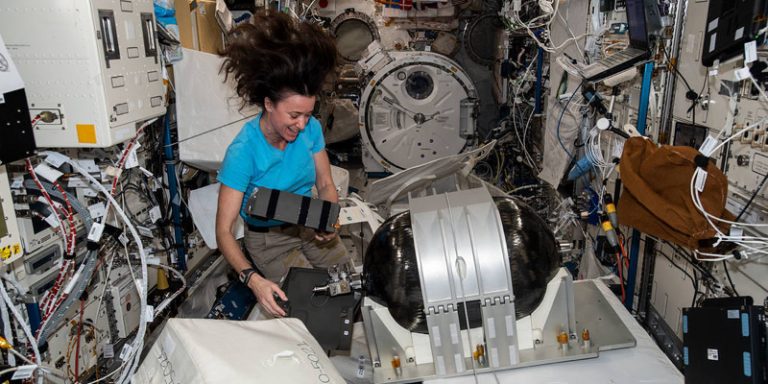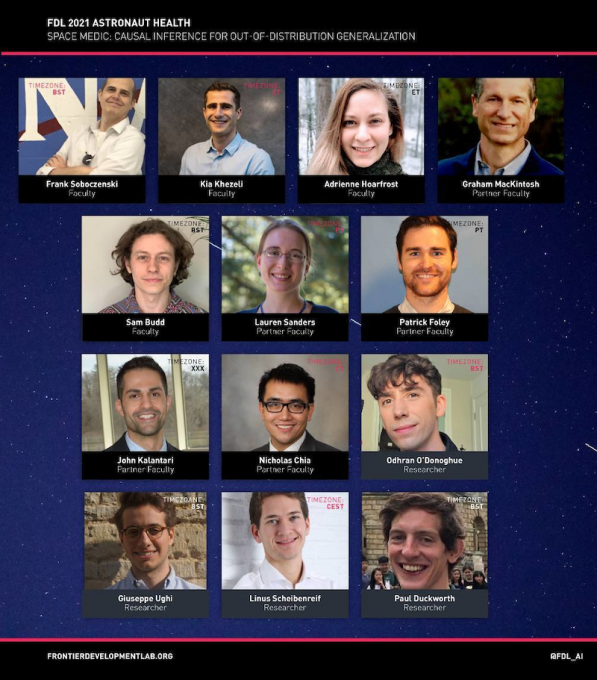
Over the past few months, Intel AI mentors have been assisting Frontier Development Lab (FDL) researchers in their study of astronaut health to better understand the physiological effects of radiation exposure. To identify biomarkers of cancer progression, using Intel’s artificial intelligence (AI) technology, they developed a unique algorithm using a combination of human and rodent radiation exposure data.
Cosmic radiation is very powerful and can penetrate materials such as steel or aluminum even if the thickness is certain. The FDL has asked about the physiological problems that could result from this exposure and their possible cancerous complications. There is still little data on the effects of cosmic radiation on astronauts from past expeditions. Moreover, this data is protected by institutions and cannot be shared.

“With Intel’s help, we formulated how causal machine learning models can work on data from different locations, without having to move data between physical locations. We achieved our goal during FDL 2021 of using tailored algorithms to better understand, improve and support astronaut health. This research is valuable; it could one day help astronauts on the International Space Station, future space stations and the upcoming 2024 lunar mission, as well as people with cancer on Earth,” said FDL researcher Paul Duckworth.
The challenge for FDL and Intel was to create an AI algorithm to train it on data stored in different locations without having to move it. To achieve this, they formulated causal learning within a federation of collaborating institutes.
“The FDL Astronaut Health team achieved some truly incredible results in this year’s challenge – both in their novel combination of human and mouse data and in identifying several cancer-causing genes,” said Patrick Foley
, Intel’s chief technical mentor.
“This work is a testament to what can happen when public and private institutions work together and how federated learning can be used to unlock discoveries that would otherwise remain buried. We are confident that this research will continue to improve health outcomes for astronauts and enrich the lives of every person on Earth.”
The researchers developed CRISP 2.0 from CRISP 1.0 from the FDL 2020 Astronaut Health Team. CRISP 2.0 proved that rodent radiation data can be used as an alter ego of human radiation data, with the latter being used to train the human algorithm. With this causal machine learning method, researchers can more accurately predict which genes will be affected by radiation, whether they are related to cancer or immune response, a true scientific achievement.

This research took advantage of Intel’s Open Federates Learning (Open FL) framework built on Google Cloud by Intel and FDL researchers. It allows CRISP2.0 models from institutions such as NASA, NASA Gene Lab, and Mayo Clinic to be trained and combined without moving them to a cluster. This was essential because while each organization had the right to use this private data, the cost of transmitting data generated in a spacecraft is very high. The institutions were each given a set of global models to do an AI training session on each local dataset; they then returned these models to be aggregated and shared with the collaborating institutions. CRISP2.0 allowed for more in-depth analysis and impact information.
“The partnership with Frontier Development Lab is a chance to solve huge problems at scale, with cutting-edge technology and unprecedented public-private collaboration in AI for exploratory medicine,” said Shashi Jain
, head of strategic innovation and FDL partners at Intel. “We believe the results of the FDL Astronaut Health challenge will enable NASA to more effectively understand the mechanisms involved in protecting astronauts as we return to the moon and beyond, as well as provide a blueprint for accelerating the use of AI in health applications on Earth.
Intel said it will continue to work with FDL to improve astronaut health via this research project but also more broadly by advising them on the application of AI algorithms in a federated learning framework, specifically using OpenFL designed by Mentor Patrick Foley.
For its part, FDL applies AI technologies to science with the goal of pushing the boundaries of research while developing new tools to solve some of the greatest challenges facing humanity. Hosted by the SETI Institute in the US, the LDF works in a public/private partnership with NASA, private sector companies and commercial AI partners. ESA is also a partner.
Translated from Comment le FDL et Intel étudient les effets des rayonnements cosmiques sur les astronautes grâce à l’intelligence artificielle









